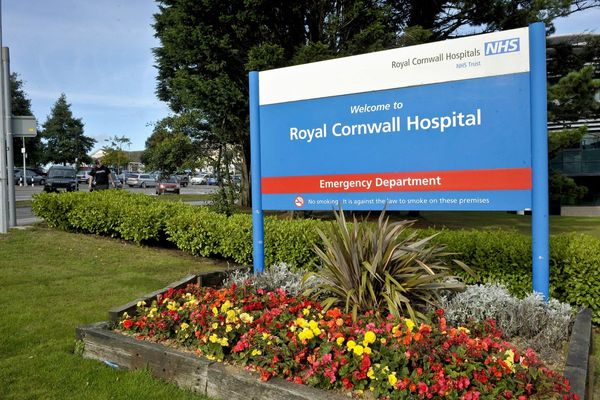BA.2 is on track to all but squeeze its Omicron cousin out of Covid-19 circulation in New Zealand – but there's still no clear evidence the faster-spreading sub-type is making people sicker.
ESR's bioinformatics and genomics lead Dr Joep de Ligt said BA.2 now accounted for about 80 per cent of hospital samples his colleagues were sequencing – and that proportion was only expected to grow.
"What we've seen abroad is that, while BA.2 might make up nearly all of cases, we'd only be looking at full eradication of BA.1 over a very long time," he said.
"All of this of course will depend on the level of spread, and whether people are taking precautions like masking or getting tested if they have any symptoms."
Countries that initially had Covid-19 outbreaks driven by original Omicron type BA.1 were now experiencing second, BA.2-fuelled waves – but given BA.2 arrived here shortly after BA.1 and quickly began co-circulating, New Zealand wasn't likely to see such an effect.
"There was perhaps just a week or two between introductions here – which has basically meant we've been having them both at the same time."
After the main wave subsided, he expected transmission to fall to a steady state of ongoing cases – albeit at a level more manageable for testing and hospital capacity.
It wasn't surprising that BA.2 - which now made up a third of US cases – had become rapidly dominant here.
"In Demark, where BA.1 and BA.2 were introduced around the same time like us, they've also seen BA.2 steadily increase over time – and that's in large part due to a growth advantage now strongly supported by evidence."
/cloudfront-ap-southeast-2.images.arcpublishing.com/nzme/SH3WUHNCU5U2H6Y7MA4Q62XKFY.jpg)
The reason for that edge - estimates have put BA.2 at between 30 per cent to 50 per cent more contagious than BA.1 - remained largely unclear.
In a report last month, the UK Health Security Agency found it was "plausible" that higher transmissibility and a shorter serial interval – a duration between when one infected person starts to show symptoms to when the next person infected becomes symptomatic – were factors behind its higher spread.
Importantly, the agency also reported no great difference in vaccine effectiveness against the two types; in fact, protection against symptomatic disease was slightly higher for BA.2 (74 per cent after two to four weeks) than BA.1 (69 per cent).
While studies have suggested BA.2 may be more resistant to monoclonal antibody treatments, there wasn't yet enough firm data to show it made people sicker.
De Ligt said there was also no such signal from the sub-set of sequences samples that came from hospital cases where Covid-19 infection was the contributing factor.
"While we know Delta has a much more severe disease outcome than Omicron, what we're also seeing is that Omicron is definitely not as mild as some people claim it to be," he said.
"It's certainly still causing severe hospitalisations – especially in people who haven't been vaccinated, or been boosted."
As for Delta, de Ligt said observed cases of the variant had similarly been squashed down, but not snuffed out altogether – as shown by a confirmed hospital case reported in the Bay of Plenty this month.
"We received this sample for sequencing late last week, and the local public health unit and hospital are now working to better understand the spread of this variant to contain the risk."
If Delta was still spreading in the Bay of Plenty, it could place people in the region at higher risk of needing hospital care.
"But it's also important for people to realise that there are specific treatment options available for Delta, which is a slight silver lining."
This month, scientists reported a hybrid variant that shared characteristics of both the Delta and Omicron strains, and which had been detected in the US and a number of other European countries.
Scientists believe the mutated strain – since dubbed "Deltacron" and formally recognised as a new variant after its full genomic sequence was uploaded to the global Covid database, Gisaid - emerged from a patient who was infected with both strains at once.
/cloudfront-ap-southeast-2.images.arcpublishing.com/nzme/7BCCZJXUJLWMZGH5TSXPYAGR6U.jpg)
De Ligt said it was possible that a new variant packing the higher severity of Delta and the faster spread of Omicron could emerge.
"That's not great for anyone, anywhere – and that's the reason the scientific community is monitoring things very closely to see if any of these recombinants become dominant and start to grow."
In this latest case, however, he didn't see any special cause for alarm yet.
"It appears to be the same old story where people get very excited about something and then realise the data is not quite in yet."
Still, he thought it was just a matter of time before the next big variant arrived.
"Unfortunately, there is a very real possibility that something is brewing somewhere in the world," he said.
"Not every country is doing genomic surveillance to the level that is recommended and that means that these variants of concern will be breeding as long as we let the virus spread and mutate.
"That's also why it's sad to see European countries dropping masking regulations and everything else, which will help the virus continue to spread more quickly - and give it the ability to create a new variant more quickly.
"Will this variant be as bad as Omicron in terms of how much more quickly it can spread, or as bad as Delta in the sense of disease outcomes? We don't know.
"But we do know for sure that one will come up, just as with influenza."







